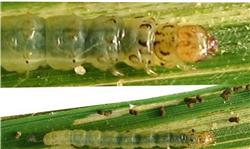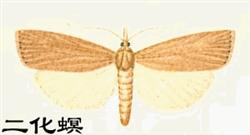How to control ginger blast and ginger borer?

How to control ginger blast and ginger borer? Please introduce the control methods of ginger blast and ginger borer can refer to the following methods for control: first, ginger blast. The disease, also known as ginger rot, is the most common destructive disease in ginger production, and it is also the main factor restricting the production and quality of ginger. In recent years, it has been repeated in our county year after year, according to the author's investigation and statistics, the average incidence rate of the disease is 19.3%, the serious land is as high as 49.6%, and some fields even fail to harvest, and the annual yield loss caused by the disease is as high as more than 40,000 tons. The main results are as follows: 1. Symptom identification: the disease mainly harms the stems, leaves and roots of ginger, the aboveground stem is dark purple, the internal tissue turns brown and rotten, and only fiber remains. Most of the leaves first lost water and curled to the back of the leaves, the leaves drooped, the vascular bundles turned brown, and then the plants withered and died, but the plants did not lodge upright. The leaves of a few serious plants turned withered yellow from bottom to top. At the initial stage of the disease, the rhizome was waterlogged and yellowish brown, and then the internal tissue gradually softened and rotted, only the outer skin remained. Milky bacterial pus could be seen in the extruded part of the disease overflowing from the vascular bundle, rotting from the rhizome and giving off a bad smell when the diseased plant was removed. The roots were also yellowish brown when they were killed, and eventually all rotted away. 2. The regularity of the disease: the pathogen overwinters in the rhizome and soil, and generally can survive in the soil for more than 2 years. Ginger is the main source of primary infection, and the diseased soil is also an important source of infection of ginger blast. In our county, ginger generally began to get sick at the end of May and the beginning of June, and sporadic disease centers were found in the field investigation in the middle of June. The disease occurred frequently from the end of June to the first and middle of July, because of the high temperature and more Rain Water in this period. it provides favorable conditions for the expansion, invasion and reproduction of bacteria. Therefore, in the case of high temperature and rainy years, the disease often causes a pandemic and serious harm in a short period of time. The peak period of the disease was from late July to early and middle September, when patches of yellowish-brown diseased plants could be seen in the field, and all serious fields could die. 3. Control methods: there are many ways of transmission of ginger blast, and the onset period is long, so it is difficult to control the disease. At present, there is no ideal chemical, so we should give priority to agricultural control measures, combined with physical control, supplemented by chemical control, in order to cut off the route of transmission and control the occurrence and spread of the disease as far as possible. ⑴ agricultural control. Strict selection of disease-free ginger and rotation of ginger for more than 4 years, combined with fine management, application of clean fertilizer and water, can cut off the way of soil bacteria transmission and reduce the occurrence of the disease to a minimum. Physical control of ⑵. After early detection and early treatment of the affected fields, local farmers generally seal the soil and diseased plants in and around the disease center with a plastic film (11480 ~ 40.35) and disinfect them with quicklime within 1 meter, which can greatly reduce the spread and spread of the disease. ⑶ chemical control. Some germicidal agents can be selected, such as 72% agricultural streptomycin powder 2000 times or 80% germicidal pioneer wettable powder 1500 times for root irrigation control. Each clump of ginger can be irrigated with 250g of root solution every 7-10 days, and can be sprayed 3-4 times. Ginger borer. Ginger borer, also known as ginger borer, is an omnivorous pest, which can cause harm from ginger emergence to pre-harvest. In general years, the harmful plant rate of the insect in ginger field is 2-5%. If you do not pay attention to prevention and control, the damage rate can reach more than 10%. 1. Occurrence regularity: ginger borer mainly feeds on the larvae. After hatching for 2-3 days, the larvae can invade from the gap between leaf sheath and stem or heart leaf at a height of 1-5 cm from the ground, and there are obvious holes in the invading place. After drilling, the larvae drill upward to eat, resulting in a hollow stem, blocking the transport of water and nutrients, the injured leaves become thin films, and there are residual feces, there are irregular pores on the leaves, and the stems and leaf sheaths are often bitten into ring marks. After the damage at the seedling stage, the upper leaves withered and withered or caused the stem to be broken, but the lower leaves generally remained normal, so it can be clearly seen in the field investigation that the upper withered and lower green plants are the harm of ginger borer. At this time, find out the insect mouth, peel off the stem, you can generally see the larvae that are feeding. The larvae are about 1-3 cm long. the larvae are milky white before the 3rd instar and yellowish or brown when they are mature. 2. Prevention and control methods ⑴ artificial capture. Because of the damage caused by the insect, the control effect of general insecticides is not very good, especially the resistance of the aged larvae is strong, so the method of artificial capture is advocated. Generally, plants that have just been drilled and eaten in the field are found in the morning, and the insect mouth is found. The larvae can be found by peeling off the stem. ⑵ chemical control. The larva has the strongest drug resistance before the 2nd instar, so early treatment and timely spraying control should be advocated. The suitable agents are 15% DuPont hit suspension 4000-5000 times, or 5% Regent suspension 3000-4000 times, or 20% a net into EC 2000-2500 times, spray on field plants, and can also be used to inject pest control. Click to get more ginger planting techniques click to get more pesticide application techniques click to get more pesticide application techniques
- Prev

What should be paid attention to in the control of rice leaf roller?
What should be paid attention to in the control of rice leaf roller? Please give guidance on the control of Cnaphalocrocis medinalis, first of all to know the control time. The control time is determined through the progress of insect state development and the growth and decline dynamics of adults under the lamp, referring to the insect state calendar, combined with medium-and short-term weather forecast. In order to make sure that you can really handle it.
- Next

What medicine is used to control Chilo suppressalis?
What medicine is used to control Chilo suppressalis? Please guide that the common control agents for Chilo suppressalis are 25% Aktai water dispersible granules, 5% Regent suspension, 20% good winter EC, 50% fenitrothion EC, Nongjiale emulsion, 5% Shachongshuang granules, 80%.
Related
- Fuxing push coffee new agricultural production and marketing class: lack of small-scale processing plants
- Jujube rice field leisure farm deep ploughing Yilan for five years to create a space for organic food and play
- Nongyu Farm-A trial of organic papaya for brave women with advanced technology
- Four points for attention in the prevention and control of diseases and insect pests of edible fungi
- How to add nutrient solution to Edible Fungi
- Is there any good way to control edible fungus mites?
- Open Inoculation Technology of Edible Fungi
- Is there any clever way to use fertilizer for edible fungus in winter?
- What agents are used to kill the pathogens of edible fungi in the mushroom shed?
- Rapid drying of Edible Fungi

